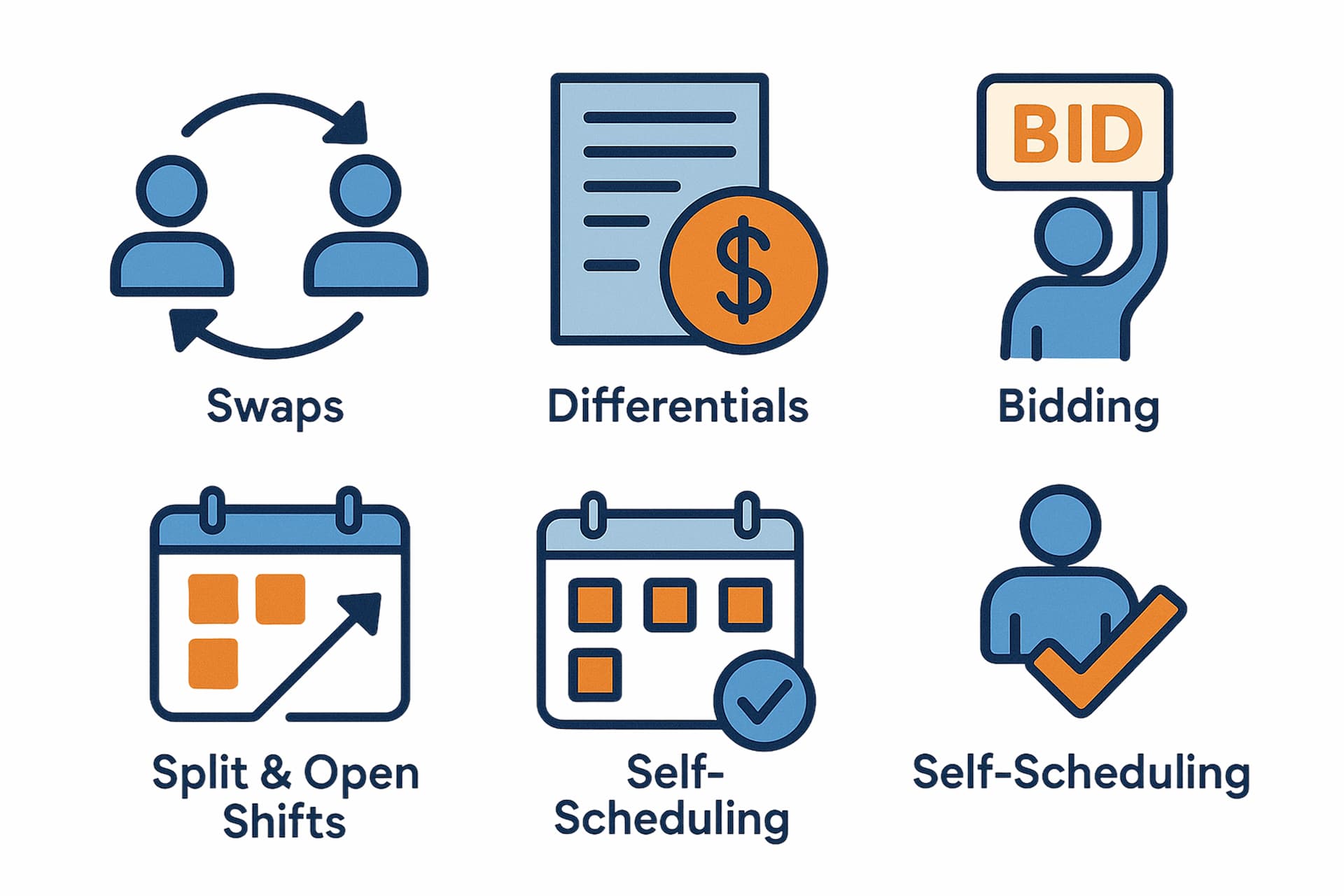It’s 2 AM and the night-shift nurse just called in sick. You open your laptop, staring at a schedule that already feels impossible. Someone has to cover ICU, another must rest after 12 hours, and the day team starts in five hours. This is everyday life in healthcare scheduling - a constant puzzle of people, hours, and patient needs. The right healthcare scheduling software makes that puzzle simpler, not harder.
Whether you run a clinic, a home-care agency, or a hospital department, your goal never changes. You need the right qualified person in the right place at the right time. Below you’ll find the tools that help real teams stay organized and calm - and a few tips to make rollout smoother.
Must-have features for healthcare scheduling
Healthcare schedules are complex. You deal with credentials, rest limits, and unpredictable patient demand. Good software helps you build order into that chaos.
Ensuring coverage. Healthcare never stops. Good scheduling means having the right number of qualified people ready for every shift so patients always receive care on time.
Managing complexities. Healthcare schedules must support 24-hour operations, on-call rotations, and specific rules unique to this field. The right software keeps it all organized without mistakes.
Balancing staff needs. Scheduling is not just filling shifts. It’s about keeping the balance between patient demand and employee well-being, reducing burnout and turnover.
Handling last-minute changes. Emergencies and sudden absences happen. A good tool helps you adjust fast so coverage stays solid and stress stays low.
Real-time scheduling. When you update a shift, every nurse and technician should see it instantly so there’s no confusion or missed change.
Time and attendance tracking. The system should log hours, breaks, and overtime accurately. That keeps payroll fair and prevents disputes.
Staff availability. Employees should be able to set when they’re free or request time off. Managers then plan with real data instead of guesswork.
Mobile access. Staff often move between units or patient homes. They need a simple way to check or adjust schedules from any device.
Shift swapping. Let people trade shifts under admin approval. It keeps flexibility without risking coverage.
Automated scheduling. The system should suggest or build schedules using skills, availability, and workload balance so managers save hours each week.
Built-in communication. Everyone stays on the same page with messages and updates inside the same platform, no texting across apps.
Real-time notifications. Staff should get instant alerts about changes, open shifts, or new requests so nothing gets missed.
Compliance. The software helps follow labor rules and internal policies, avoiding accidental overtime or missed breaks.
Improved patient care. Well-balanced schedules mean teams are rested and focused, which directly improves the quality and safety of care.
Higher efficiency and satisfaction. Fewer manual edits, fewer errors, and a more predictable rhythm at work. Teams feel supported and patients feel the difference.
For specific roles, check pages for nurse managers, clinic managers, medical offices, home-care, and pharmacy.
How nurse scheduling software works
Creating a nurse schedule isn’t just about filling shifts - it’s about understanding your unit’s needs, patient load, and daily changes. Before you even start, it helps to look at how many nurses are available, who has requested time off, and whether anything in the hospital might affect staffing. In busy medical units, patient numbers can change overnight, so managers often check the census regularly to make sure schedules reflect real needs.
Modern scheduling tools make this process far easier. They combine visual builders, mobile self-service apps, and smart automation, letting managers publish schedules in minutes while nurses get instant notifications. Time entries flow directly into timesheets, and even complex rotation patterns like Pitman, Panama, or 2-2-3 are handled automatically.
Publishing schedules early helps everyone plan ahead and maintain work-life balance. When overtime is needed, the right software makes it easy to assign shifts fairly without overloading staff. It also supports shift swaps, helping nurses trade hours when needed while keeping coverage balanced and budgets under control.
In short, modern nurse scheduling software takes what used to be a stressful, manual process and turns it into a streamlined, transparent system that benefits both staff and managers.
Best healthcare staff scheduling software
Below are widely used options across hospitals, clinics, and care organizations. We summarize what each does best, typical pricing, and key user feedback.
Shifts by Everhour
Best for unified scheduling + time tracking with clean mobile experience
- Free plan available
- From $4/user/month (billed annually)
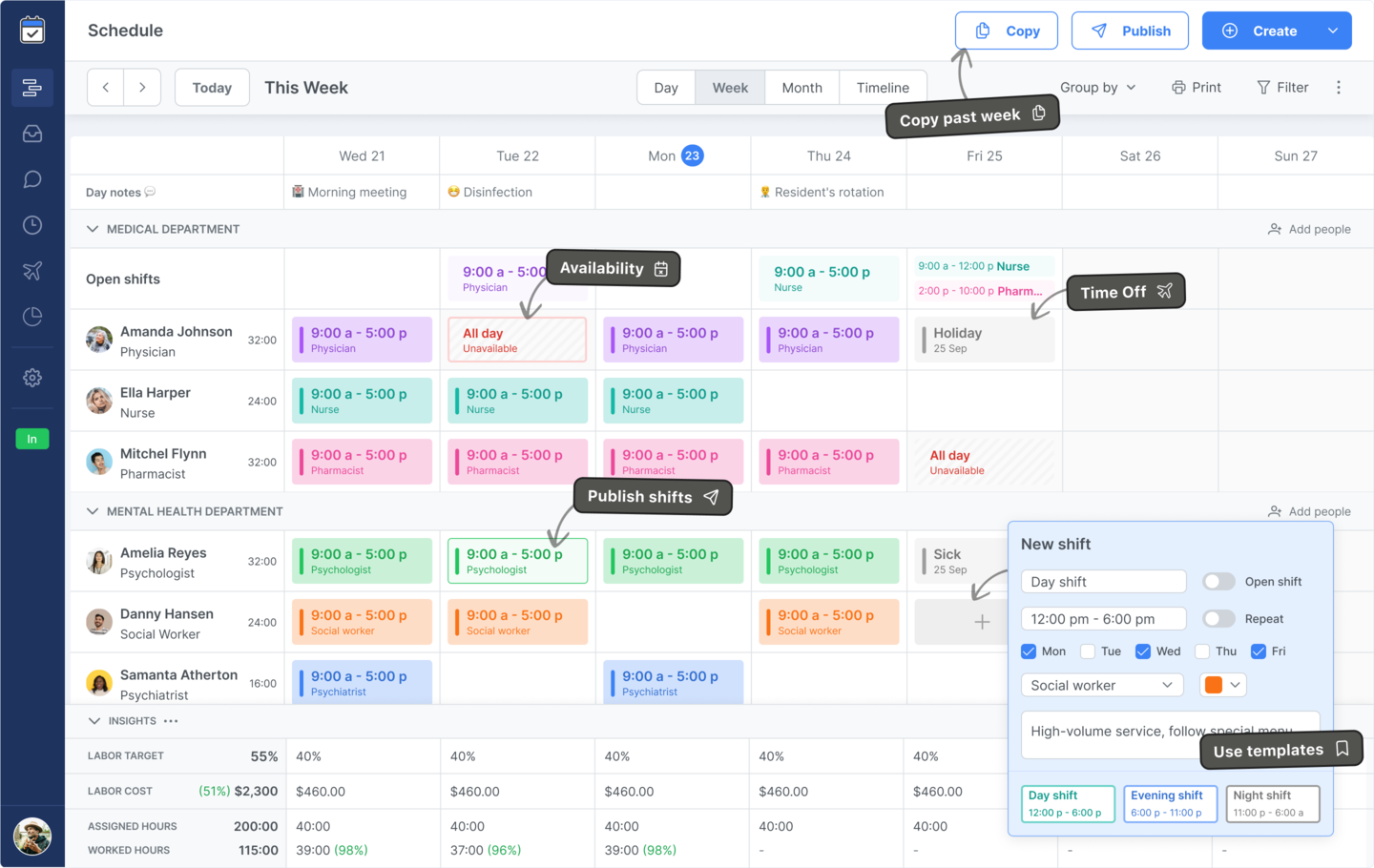
Shifts by Everhour brings schedules, time clocks, PTO, and team messages into one place-ideal for clinics, private practices, home-health, and departments that need clarity over complexity. Explore employee shift scheduling, scheduling + time clock, and engagement tools.
Key Features
- Combined scheduling + GPS time clock
- Mobile self-service: swaps, bids, PTO, availability
- Open shifts, templates and instant publish
- Team messaging & announcements in one app
- Clear visibility into overtime and labor hours
- Simple rollouts for small to midsize care teams
Pros / Cons
- One app for schedules, time, and communication
- Fast onboarding, intuitive for non-technical staff
- Great for multi-site outpatient and home-health
- Fewer deep enterprise integrations
- Advanced analytics still evolving
Connecteam
Best for all-in-one operations with HIPAA-friendly workflows
- Free plan for small teams (feature-limited)
- Tiered pricing by feature set
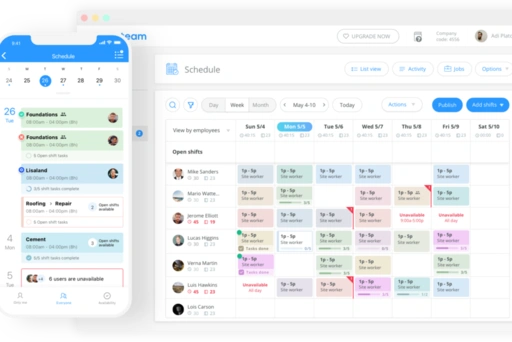
Often praised for a HIPAA-compliant, user-friendly interface. Combines scheduling with tasking, forms, and training modules-useful for multi-site clinics and ancillary departments.
Key Features
- Drag-and-drop scheduling & shift templates
- Mobile app with self-service requests
- Forms, checklists, training, and chats
- Role-based permissions and auditing
- Kiosk and GPS time clocks
- Basic reporting & acknowledgments
Pros / Cons
- Broad “all-in-one” feature set beyond scheduling
- Simple mobile UX helps adoption
- Depth of scheduling analytics varies by plan
- Can feel heavy if you only need scheduling
Deputy
Best for labor cost control with robust scheduling + timekeeping
- Free trial available
- From ~$4.50–$6.50/user/month (annual)
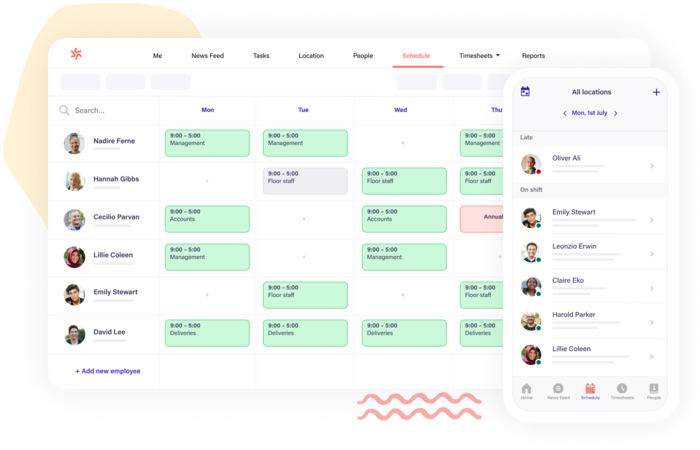
Deputy ties schedules tightly to attendance and overtime rules, helping prevent overages while keeping teams informed. Popular in high-volume environments (urgent care, outpatient, ancillary services). Related reads: hospital scheduling software.
Key Features
- Intuitive schedule builder & mobile clock-in/out
- Real-time compliance (overtime, breaks)
- Multiple location & role support
- Shift swap, open shifts, notifications
- Timesheets & payroll integrations
- Basic demand forecasting
Pros / Cons
- Good balance of ease-of-use and control
- Strong timekeeping + scheduling linkage
- Some advanced reports behind higher tiers
- Occasional mobile performance complaints
Sling
Best for budget-friendly scheduling with cost visibility
- Free plan (limited)
- From ~$1.70/user/month (annual) for premium tiers
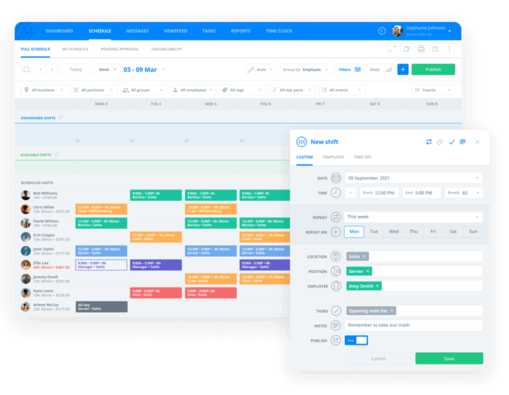
Sling offers simple scheduling plus labor-cost views-handy for outpatient clinics, imaging centers, and ancillary departments managing tight margins. See also our free scheduling software comparison.
Key Features
- Shift scheduling with cost estimates
- Attendance & clock-in/out options
- Team messaging & alerts
- Open shifts & swap requests
- PTO & availability tracking
- Basic reporting
Pros / Cons
- Very affordable for small departments
- Simple, quick to roll out
- Mobile interface less polished for some users
- Fewer advanced compliance features
QGenda
Best for enterprise-grade provider scheduling & workforce optimization
- Demo-based pricing
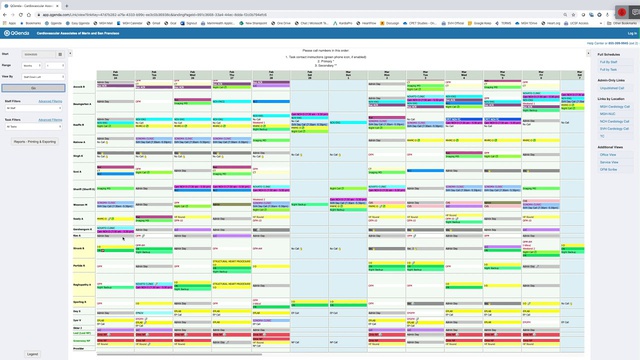
A widely adopted hospital platform emphasizing provider scheduling, on-call, and optimization for patient access. Users highlight customization and helpful support; setup can be complex and time-consuming for large orgs.
Key Features
- Physician & APP scheduling with complex rules
- On-call rosters, rotations, and request workflows
- Analytics on utilization and access
- Role-based portals & mobile access
- Integrations with hospital systems (varies)
- Enterprise controls & auditing
Pros / Cons
- Powerful for complex provider groups
- Flexible configuration options
- Lengthy setup, steeper learning curve
- Mobile UX feedback varies by team
OnShift
Best for long-term care & senior living (scheduling + labor control)
- Demo-based pricing
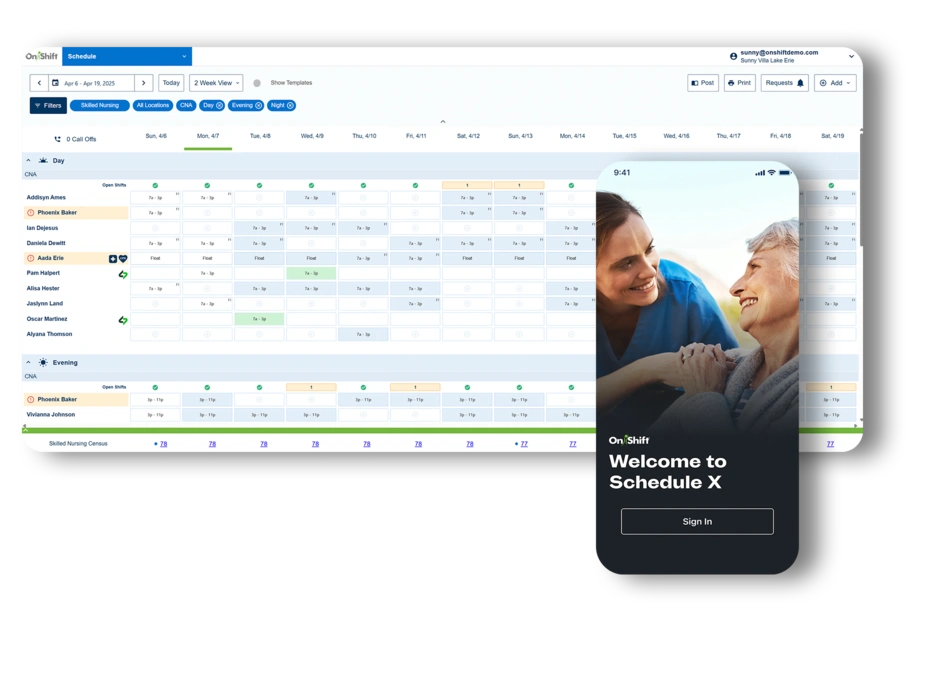
Suited to LTC and senior care. Users like ease of navigation and time-saving automation; some mention notification quirks and data-sync limitations in specific setups. See also our caregiver scheduling resources.
Key Features
- Scheduling with overtime & call-out controls
- Mobile access & messaging
- Timesheets & attendance
- Reports for staffing & cost
- Open shifts and swap workflows
- Multi-facility management
Pros / Cons
- Designed for LTC staffing realities
- Clear reports and hour tracking
- Notifications can be inconsistent for some users
- Setup/customization complexity at scale
MakeShift
Best for ease-of-use with strong shift trading and future planning
- Free trial available
- From ~$5.75/employee/month
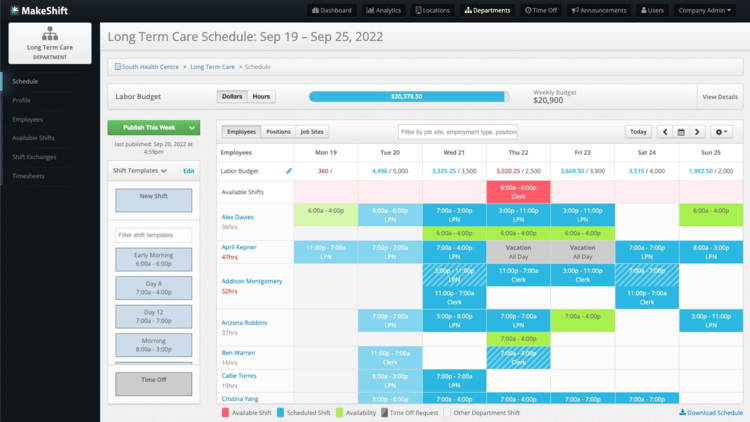
Users praise quick scheduling and time savings; wish lists include more customizable reports and richer communication tools. Good for clinics that value simple, clean UX.
Key Features
- Fast schedule building & future planning
- Shift trading & availability
- Mobile app for staff self-service
- Basic reporting & notifications
- Multi-location support
- PTO & approvals
Pros / Cons
- Very easy to learn for staff
- Great for shift trading
- Limited custom reporting for some needs
- Smaller ecosystem vs. big vendors
OnPage
Best for on-call alerting & incident response in clinical settings
- Free trial available
- From $13.99/employee/month
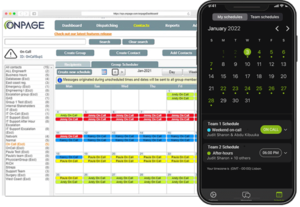
Complements scheduling with reliable critical alerting and on-call management. Users like dependable notifications; some report sound/transcription quirks and alert fatigue if misconfigured.
Key Features
- On-call scheduling & escalations
- Secure messaging & alerting
- Mobile apps with audit trails
- Integrations for incident workflows
- Message delivery confirmations
- Reporting on response SLAs
Pros / Cons
- Very reliable critical notifications
- Strong for on-call rotations
- Sound/transcription limitations noted
- Needs careful tuning to avoid alert fatigue
EasyShifts
Best for small clinics wanting quick, simple scheduling
- Free trial available
- From $4.99/employee/month
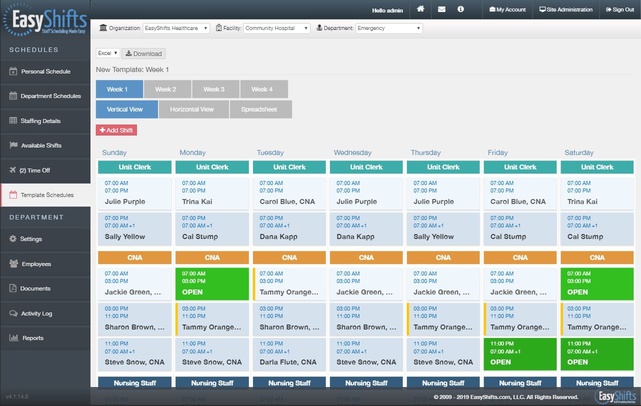
Praised for simplicity and helpful support; feature limits and occasional notification issues are noted by some users. A lean choice for small teams and single-site clinics.
Key Features
- Quick schedule edits & mobile access
- Open shifts & availability
- PTO requests & approvals
- Basic reporting & alerts
- Real-time shift updates
- Light learning curve
Pros / Cons
- Very fast to get started
- Support often rated highly
- Limited PTO and customization for some needs
- Occasional glitches entering availability
Featured Tools
How to choose the right healthcare scheduling software
Choosing the right healthcare scheduling tool starts with understanding your team’s workflow. Acute care units need advanced logic for rotations and coverage; clinics often prioritize quick schedule publishing and staff self-service; home care teams depend on mobile-first tools with GPS check-ins and reliable notifications.
Before you decide, consider how the platform handles your day-to-day realities. Can your team build new schedules instantly based on past templates, or do you have to start from scratch each time? A good system should let you copy, adjust, and publish schedules in minutes - not hours.
Think about communication, too. The best software automatically notifies staff when new schedules or open shifts appear, helping fill gaps fast. If someone calls off, the system should log it, update availability, and alert other team members who can step in.
Flexibility is key. Managers should be able to add shifts even after publishing, approve swap or open-shift requests, and quickly identify gaps or overages. A platform that adapts in real time prevents last-minute chaos and improves coverage consistency.
Finally, make sure the solution works wherever your team does. A strong mobile app should let staff check their schedules, request time off, or claim open shifts from anywhere. Test one or two platforms for a week using real shifts - you’ll quickly see which one truly fits your team’s rhythm.
Benefits & ROI for healthcare organizations
Good scheduling is more than filling shifts — it’s what keeps healthcare teams balanced, motivated, and effective. When nurses know their hours in advance, can rest properly, and swap shifts easily, they feel calmer and more in control. That means fewer absences, less burnout, and stronger teamwork.
Modern scheduling tools make this possible. They automate shift creation, prevent double-booking, and help managers match the right skills to the right shift. Hospitals and clinics that use these tools see fewer mistakes, lower turnover, and better coverage — which directly improves patient care.
Better schedules also save money. With fewer last-minute changes and less overtime, managers can plan staffing more accurately and avoid overspending. As FlowForma and the NIH note, automation reduces errors and brings structure to complex operations.
When employees feel supported, patients feel it too. Well-rested nurses give better attention, make fewer mistakes, and create a safer environment for everyone. Consistent scheduling helps hospitals build trust — both inside the team and with their patients.
“Workforce management systems can deliver an average return of $7.88 for every dollar invested, thanks to fewer errors, better staffing allocation and higher productivity”
Adoption tips for smooth rollout
Rolling out new scheduling software works best when it feels like an upgrade, not a disruption. Start small, communicate clearly, and build confidence step by step.
Begin with a pilot in one department. Add the first portion of shifts, let the team test real workflows, and collect feedback before expanding. Early success stories help others see the value and reduce resistance.
Keep training simple and practical. Short videos or live demos are far more effective than manuals. Encourage users to try key features themselves — creating shifts, swapping, and requesting time off — until it becomes second nature.
And most importantly, make self-service the core experience. When staff can easily claim open shifts, mark availability, and see updates instantly, adoption grows naturally across the organization.
The bottom line
Healthcare scheduling is more than filling boxes on a calendar. It’s about safe staffing, rested clinicians, and predictable care. Pick a tool that fits your team, automate what you can, and keep people connected. The right software brings calm to the chaos.


